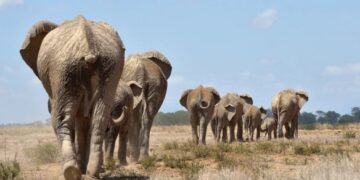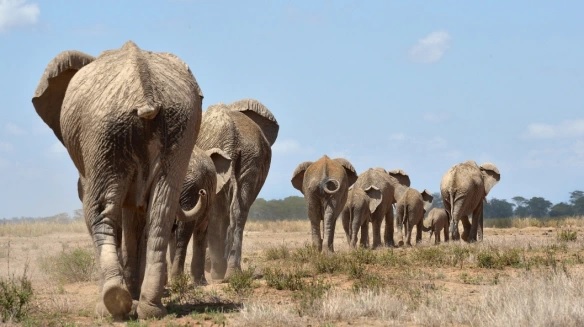By John Ikani
Worsening climate crisis is driving elephants on a forced migration across southern African borders as they desperately seek water, posing challenges for national parks and conservation endeavours.
Recent reports reveal that Zimbabwean elephants have been crossing into Botswana in search of water, a development that has raised concerns among officials.
The exact number of elephants affected remains uncertain. This comes at a time when a survey unveiled a distressing fact: elephants are succumbing to heat stress due to rising temperatures.
Angola, Botswana, Namibia, Zambia, and Zimbabwe collectively host approximately half of the world’s savanna elephants, numbering 228,000.
The survey, conducted in the Kavango-Zambezi Transfrontier Conservation Area, one of the planet’s largest wildlife conservation zones spanning 520,000 square kilometers (210,000 square miles) across these five states, indicated a concerning “carcass (mortality) ratio” of 10.5%.
This alarming statistic prompts further investigation as a potential indicator of the elephant population’s health and stability.
Interestingly, Zimbabwe’s elephant population had been on the rise until recently, which led to heightened pressure on biodiversity and increased conflicts with local communities as these elephants ventured into human habitats in search of water.
Government spokesperson Nick Mangwana reported that 60 Zimbabweans have lost their lives to elephant encounters this year.
Tinashe Farawo, spokesperson for the Zimbabwe Parks and Wildlife Management Authority (Zimparks), emphasized, “Elephants know no boundaries – they are moving in search of water and food.” The situation has prompted the implementation of mitigation measures, including reliance on costly artificial water sources from boreholes.
Notably, not only elephants but also various other wildlife species in Hwange National Park are leaving the area in large numbers due to the scarcity of resources.
Zimbabwe estimates its elephant population at around 100,000, with overpopulation issues reported in regions like Hwange, a vast area of more than 14,600 square kilometers (5,600 square miles), housing approximately 50,000 elephants.
The migration began in August, although it remains challenging to quantify the exact number of elephants on the move. Tinashe Farawo acknowledged, “I cannot quantify how many elephants have moved – whether it’s hundreds or thousands – but it has been a lot.”
To address the overpopulation issue in Hwange, authorities had previously devised plans to relocate elephants to other areas, including Gonarezhou in southeast Zimbabwe near the Mozambique border.
However, resource constraints have halted this plan. Farawo explained, “There is no translocation of animals. We would have loved to decongest, but there is nothing like that at the moment.”
Meanwhile, Zimbabwe has been advocating for the temporary lifting of the Convention on International Trade in Endangered Species’ (CITES) ban on elephant ivory sales (£480 million). The country argues that the proceeds from a one-off sale could significantly bolster its conservation efforts, which are increasingly strained.


































